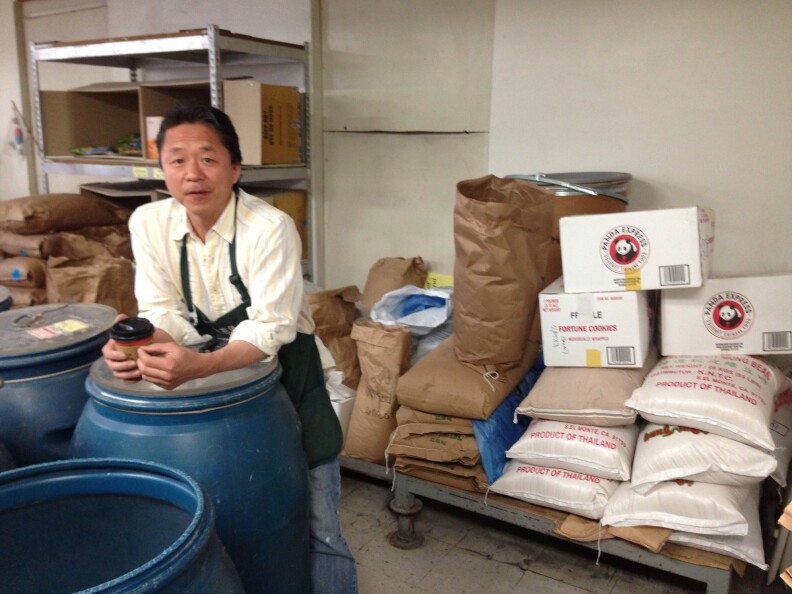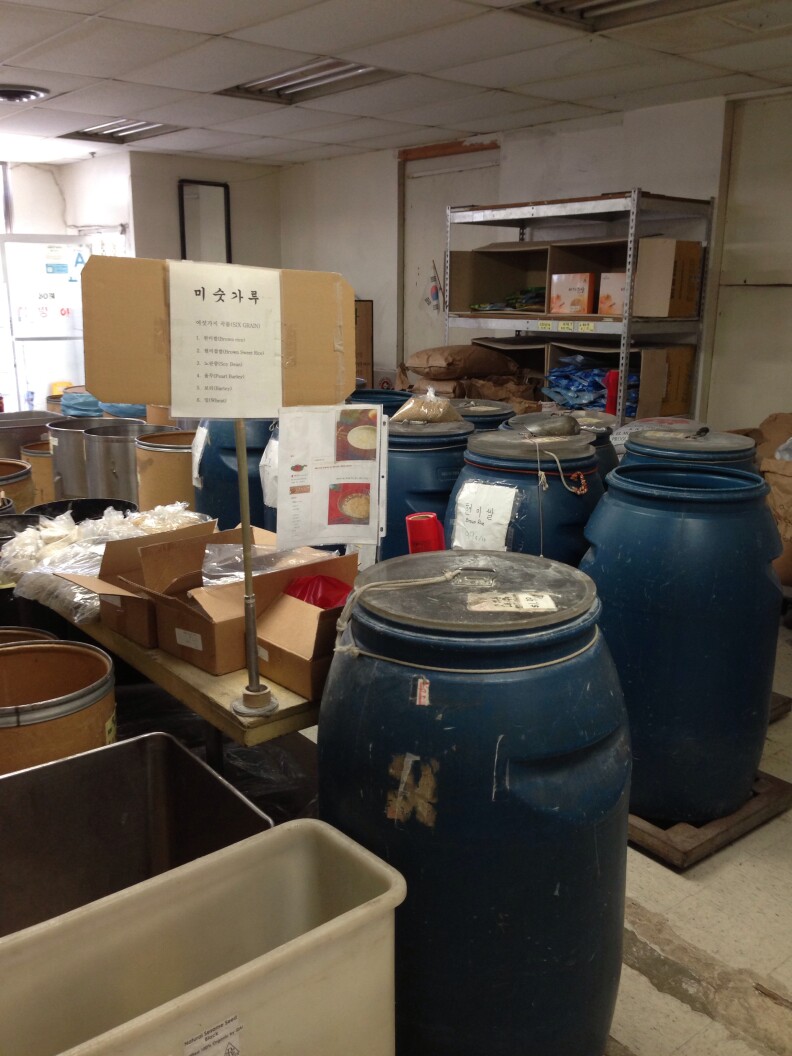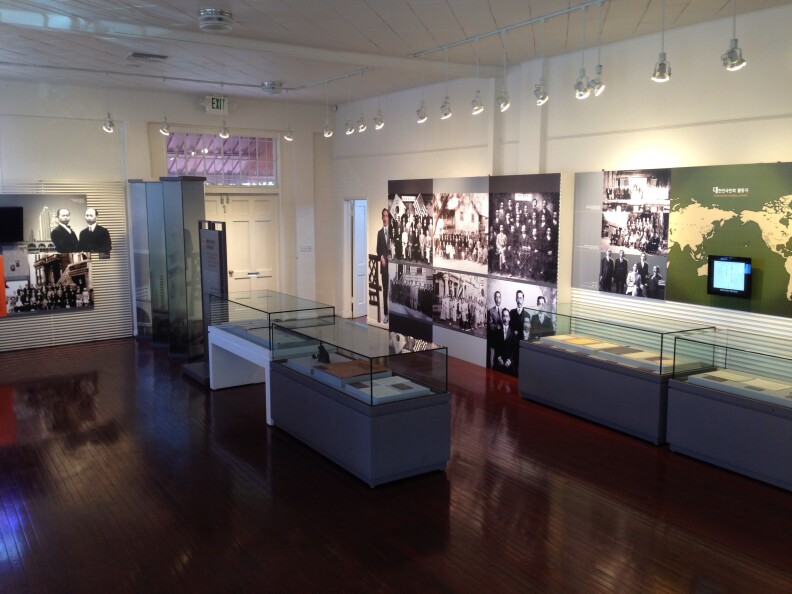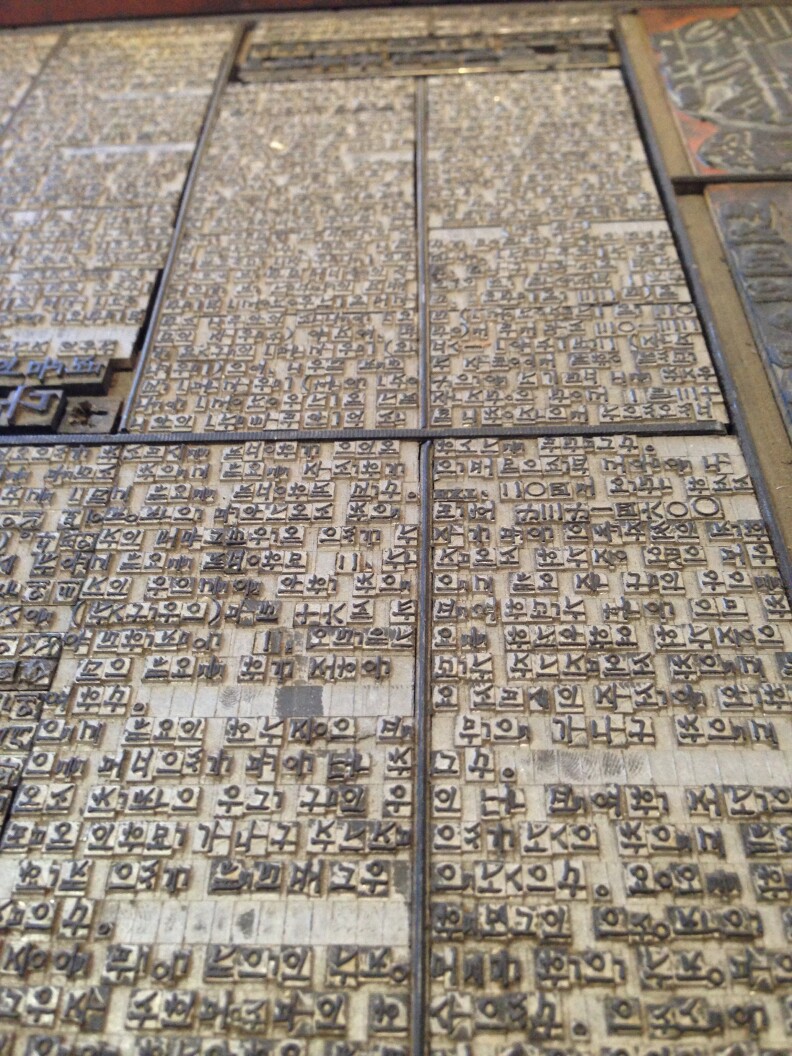This weekend if you’re looking for friends, fun, and lots and lots of beef, you could do worse than a trip to Koreatown.
Tens of thousands of Angelenos are expected to attend the fifth annual Korean BBQ Festival, which coincides with CicLaVia, on Sunday. Wilshire Boulevard will be car-free and packed with vendors offering everything from galbi to bulgogi and beyond. Don’t forget the soju cocktails!
So as part of our Neighborhoods series – and in preparation for Sunday’s festivities — Tess Vigeland stopped by Koreatown for a taste and narrated her trip.
Of course I wanted to start our tour of Koreatown with that famous BBQ, but instead, I met up with Katherine Youngmee Kim at the Korean National Association Memorial Hall. Kim is the author of a book about K-Town’s history called – appropriately enough – “Los Angeles’ Koreatown.”
The Hall is a squat brick building near Jefferson and Normandie in South L.A., not far from the USC campus. Inside, Kim points to a life-sized photo of An Chang-Ho, one of the early leaders of the Korean-American immigrant community.
Chang-Ho came to the United States in 1903, and lived in the Bunker Hill area in Los Angeles, where the first Koreans in Los Angeles congregated. Japan annexed Korea in 1910, which led Chang-Ho to create the Korean National Association to encourage Korean-Americans to raise funds for the Korean provisional government.
"Korean-Americans were really heavily involved in this independence movement, and An Chang-ho was their leader," said Kim. "Bunker Hill was the original Koreatown, and this was early: 1903, 1910 to 1920. At that time in 1920, there were only 89 Koreans in Los Angeles,” said Kim.
In addition to two rooms of historical photos and artifacts, the museum houses a beautiful original printing press from “The New Korea,” the first Korean-American newspaper in this country. Visitors can watch a video explaining the history of Koreans in Los Angeles.
Korean immigration stopped in the mid-1920s after implementation of the Oriental Exclusion Act. It was part of a law signed by President Coolidge that imposed quotas on all non-American nationalities, but completely barred immigrants from Asia.
Not until the 1950s did Los Angeles — and the U.S. — see a second wave of Korean immigrants, mostly of GI brides and affluent students seeking higher education after the war. The biggest influx of Koreans came after 1965.
“There was another immigration act that was passed that allowed for families that were in this country to bring over their families, and in Los Angeles that's really where you saw the proliferation boom. That’s considered the third wave," said Kim.
From The Past To The Present
For a closer look at that third wave, and those who came after it, we headed north across the 10 Freeway to today’s Koreatown. It’s an area generally bounded by Olympic Boulevard to the south, Vermont to the east, Beverly to the north and Crenshaw to the west.
The city estimates that nearly 125,000 people live in that area of just under three square miles. It’s among the highest population densities in the country, with Asians making up 32 percent of K-Town's population. Latinos comprise more than 50 percent.
"We're across from VIP Plaza, which you can see with the blue tiles on the roof," said Kim. "The real estate developer, Hi Duk Lee, he built all these buildings with the vision of creating a Koreatown here because he wanted it to be like Los Angeles's Chinatown."
We head over to Kim Bang Ah, a mill that has been around since 1967 and that originally started down in the old Koreatown on Jefferson. We walk into a small storefront filled with giant blue plastic barrels of freshly-ground grains and meet owner James Kim.
“My grandfather was 67 years old when he came to the United States, and started the business," said Mr. Kim. "He located several places, and settled here in 1970-somewhere I believe.”
Kim’s grandfather was among the thousands of Korean businessmen who began K-Town’s migration from south L.A. to its current home in mid-Wilshire in the 1970s. He now runs the business, which uses an old milling machine hand-carried from Korea, to grind grains for local shoppers.
“The old-style way of buying food in Korea brings back the old memory, so that way it has the feeling of being in Korea, I guess. Feel a little more like at home," said Mr. Kim. "We wash and ground our own materials.”
This old-school milling store, surrounded by modern strip malls and taco joints, is symbolic of today’s Koreatown, the traditional mixed with the new. It’s also one of the K-Town businesses that stayed through and after the 1992 riots that spread north from South Central destroyed much of the area and prompted thousands of residents to move away.
Kim says he’s not sure how long the store will survive, given that his customer base is mostly mothers and grandmothers. The younger generation is far less interested in ground grains than grilled meats.
Katherine Kim ends our tour of K-Town at Chapman Plaza on sixth Street – a Spanish revival-style strip mall with several Korean BBQ joints, a hair salon, and, of course, a karaoke bar. On any given night the wait at Kang Hodong Baekjeong — a new hotspot owned by a famous South Korean comedian and wrestler — can be an hour-plus.
“We're having Doenjang Jjigae, which is soy bean stew, and we're having marinated short rib. We'll be barbecuing here [at the table], and they'll be doing most of the work for us. This is Bori Cha. It's like Korean water, but it's barley tea.”
After packing our stomachs with Korean beef, kimchi, and barley tea, we wandered back out into the parking lot and I asked Kim where else she’d recommend for first-time visitors to Koreatown.
“Probably go to one of the malls. There's Koreatown Plaza, which is on Western. And then the Koreatown Galleria, which is on Olympic. They're sort of just multi-level malls with food courts and Korean shops. And they both have big Korean grocery stores, which are fun for people to wander through," said Kim. "Vermont and Olympic, there's a mini-mall there that has Park's BBQ, which I really like, and next door there's a goat stew for those who are feeling a little bit more adventurous."
What does Kim love most about Koreatown?
"I love the bathhouses. There are bathhouses scattered all across Koreatown. Some of them are open all night. I actually went yesterday with my family. There's saunas - dry saunas, wet saunas, clay saunas, salt saunas."
If you find yourself in Koreatown at night, make sure you stop by one of the many karaoke bars. Just make sure you get there early, they tend to fill up even during the week.











